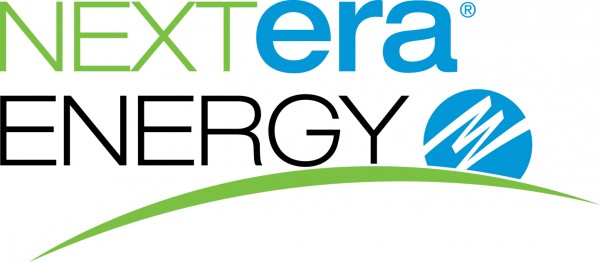Energy and Natural Resources Market Radar (December 19, 2011)

Strengths
- The Brazilian fertilizer agency ANDA released November 2011 fertilizer data showing potash demand of 493,000 tons in November and total potash tonnage year-to-date of 7.04 million tons, up 24 percent year-over-year. Total Brazilian fertilizer imports were flat versus November 2010 with domestic consumption up 2 percent.
- In another sign of rising gold demand in emerging economies, China’s gold imports from Hong Kong surged 51 percent to a record in October as investors sought to hedge against turmoil in the financial markets and took advantage of the price gap between the two places. Mainland China bought 86,299 kg (86.3 metric tons) from Hong Kong in October, up from 56,977 kgs in September, according to the Census and Statistics Department of the Hong Kong government.
- Copper imports by China advanced 18 percent to 452,022 metric tons from 383,507 tons in October, the highest level in 20 months as stronger local prices than in London prompted traders to increase buying. Iron ore imports by China rebounded 29 percent in November from an eight-month low as some steelmakers replenished their stockpiles after prices fell. The country imported 64.2 million metric tons of iron ore last month, General Customs said. This is the highest since January, and compares with 49.94 million
Weaknesses
- Most commodity prices fell this week as global growth concerns, coupled with unresolved eurozone issues following last week’s EU summit, continue to rattle investors. Commodity-related equities fell about 6 percent this week.
- Crude oil (West Texas Intermediate) fell 6 percent last week to close near $93.50 per barrel as weekly Department of Energy data indicated rising inventories.
- Macquarie Research reported that preliminary Indian iron ore export volumes for November totaled 5.14 million tons, down 36 percent year-over-year. Total export volumes are down by 22.4 million tons year-over-year in the first 11 months of this year and are set to total only about 80 million tons in 2011, 15 million tons below initial expectations and 33 percent below recent peak levels in 2009.
- U.S. aluminum orders continued to weaken in November as buyers apparently destock towards the end of the year. Total orders (ex-cansheet) fell 3.4 percent month-over-month in November, according to the U.S. Aluminum Association's monthly survey.
Opportunities
- JP Morgan highlighted that the International Energy Agency (IEA) medium-term coal report says that coal demand is set to increase by 600 kilotons per day over the next five years, driven by forecast growth from China and India. This compares well, under the circumstances, to the last decade’s 700 kilotons daily growth. The agency added that the increase in demand could put upward pressure on costs and prices as infrastructure maxes out. Interestingly, the study points to different scenarios for Chinese imports that vary between a bull case of 180 million tons by 2016 and a bear (for imports) at just 39 million tons depending on the success of domestic investment in mine and rail infrastructure.
- China’s Coal Transport and Distribution Association reported thermal and coking coal imports to increase by 13 percent in 2012. Chinese customers may push for more overseas purchases in the next year as they face the cheapest foreign supplies in three years relative to domestic costs. Chinese benchmark thermal coal traded $22 higher than supplies from Newcastle as of December 4. This is the widest difference since July 2008.
- Roubini Global Economics (RGE) highlighted that today the world’s largest consumers of potash are China (16 percent), followed by the United States, Brazil and India, with the world’s largest importers being consistent with the exception of the United States. RGE has also forecasted that global potash demand will rise 11 percent to 58.3 million tons this year. While demand grew from India and China at an annual rate double the world average at 8 percent between 1993 and 2008, Indian production is set to grow as well in order to maintain the country’s position as the second-largest producer of sugar, rice, wheat, fruits and vegetables. RGE also highlighted that Brazil is slated to be the top potash consumer by 2020, despite having its own reserves. The seasonality in Brazil is such that there is an all-year demand for fertilizer. Overall, RGE believes potash investments in the medium- to long-term look positive, with short-term macroeconomic head winds such as heightened volatility.
Threats
- The China Non-Ferrous Industrial Association (CNIA) met with 10 major domestic aluminum smelters to discuss business strategy in light of current low aluminum prices and the losses of some producers. Macquarie Research reported that the overall outcome from the meeting appears bearish for the Shanghai Futures Exchange price, with no agreement reached on an alliance to idle capacity, a confirmation the SRB will not buy excess metal, and the prospect of CNIA pushing the Natural Resources Defense Council for preferential power rates (thereby reducing cost support).
- In its latest monthly report, the IEA also reduced its 2012 demand forecast by 200,000 barrels per day to 90.3 million barrels per day, representing a growth rate of 1.4 percent year-over-year. OPEC’s latest monthly report released this week also reduced its 2012 demand estimate by 140,000 barrels per day to 88.87 million barrels per day, equating to global oil demand growth of 1.1 percent, slightly lower than that of the IEA.
- The western Corn Belt has now been threatened, as the severe drought that has gripped Texas, Oklahoma and Kansas for the past year has spread north into eastern Nebraska, northwestern Iowa, and southern Minnesota. Barclay’s Capital reported that while some improvement is expected in southern Minnesota over the winter, the drought is expected to persist in that part of the state as well as in northwestern Iowa at least through the end of the most recent forecast period ending February 29. Soil cores being taken in parts of Iowa are coming back dry while field agronomists have reported that the soil is dry to depths of five feet in northwestern Iowa, which is now experiencing severe drought, according to the U.S. Drought Monitor. Parts of the state are as much as nine inches behind in precipitation. Soil in southern Minnesota is just as dry.
- Deutsche Bank believes that a hazard for the commodities complex would be a further appreciation in the U.S. dollar, as historically this has tended to push commodity index returns lower. The dollar has been on a relatively steady strengthening path since hitting 1.42 in late October. The U.S. dollar strength may be linked to increasing concerns towards funding issues in Europe, as the first quarter of 2012 will mark the peak of the funding schedule for the euro area and specifically Italy and Spain. Despite opposed announcements from the European Central Bank (ECB) last week, the likelihood of a rate cut in Europe in early 2012 is still a conceivable scenario which, once realized, would further weaken the euro.













